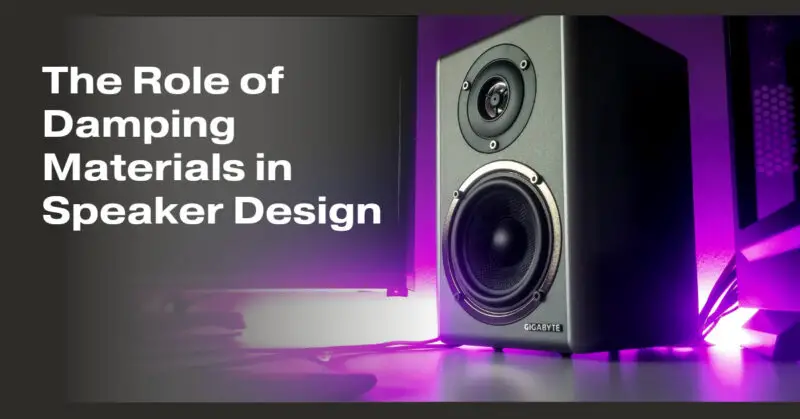Damping materials are a critical but often overlooked aspect of speaker design. They play a vital role in controlling resonances, reducing vibrations, and enhancing overall sound quality. In this guide, we’ll explore the importance of damping materials in speaker design and their various applications.
1. Controlling Resonances:
Resonances occur when the various components of a speaker, such as the cone, diaphragm, and enclosure, vibrate at their natural frequencies. These resonances can color the sound, causing distortion and unwanted coloration. Damping materials are strategically placed within the speaker to absorb and dissipate these vibrations, minimizing resonances and ensuring a more accurate sound reproduction.
2. Reducing Cabinet Vibrations:
The speaker cabinet itself can generate vibrations due to the movement of air and the energy produced by the drivers. These vibrations can introduce unwanted noise and distortions into the sound. Damping materials applied to the interior surfaces of the cabinet help absorb these vibrations, preventing them from affecting the audio quality.
3. Enhancing Clarity and Detail:
Effective damping materials reduce unwanted vibrations and resonances, resulting in a cleaner and more detailed sound. This clarity allows listeners to hear subtle nuances in music and enjoy a more faithful reproduction of audio recordings.
4. Improving Bass Response:
Damping materials are particularly important in the design of subwoofers and bass-reflex speakers. They help control the resonance of the enclosure and the movement of air within it, allowing for tighter and more controlled bass response.
5. Preventing Standing Waves:
Standing waves, or room modes, can occur within the speaker enclosure due to the reflection of sound waves off internal surfaces. Damping materials help mitigate standing waves by absorbing and dispersing sound energy, leading to a more even and balanced sound output.
6. Types of Damping Materials:
- Damping Foams: Foam materials with specific density and viscoelastic properties are commonly used for damping. They can be applied to various internal surfaces of the speaker enclosure.
- Damping Sprays: Some manufacturers offer damping sprays or coatings that can be applied to internal surfaces to reduce vibrations.
- Damping Pads: Damping pads, often made of rubber or foam, can be strategically placed inside the speaker cabinet to absorb vibrations and prevent resonance.
- Internal Bracing: Reinforcing the speaker cabinet with internal bracing can also help control vibrations and improve structural integrity.
7. Design Considerations:
Effective damping requires careful consideration of materials, placement, and quantity. Over-damping can stifle the speaker’s dynamics, while inadequate damping may not sufficiently control resonances. Speaker designers must strike a balance to optimize performance.
8. Advanced Materials:
In high-end and audiophile-grade speakers, advanced materials such as constrained-layer damping (CLD) structures, sorbothane, and other proprietary damping technologies are employed to achieve superior performance.
In summary, damping materials are essential components in speaker design that help control resonances, reduce vibrations, and enhance audio clarity and fidelity. Their strategic placement and choice of materials play a crucial role in crafting speakers capable of delivering accurate and immersive sound experiences. Whether you’re a speaker designer or an audio enthusiast, understanding the role of damping materials is key to appreciating the intricate science behind quality audio reproduction.

